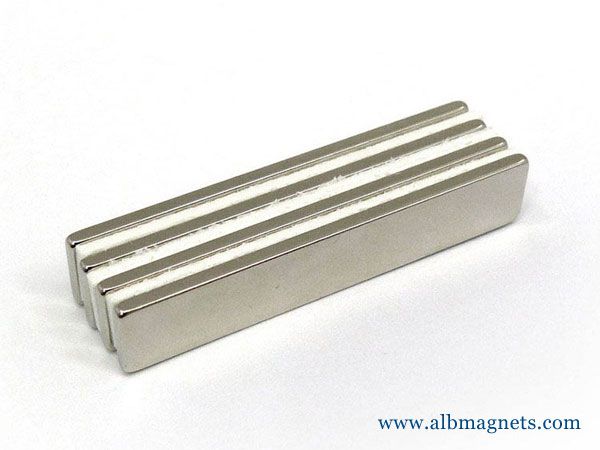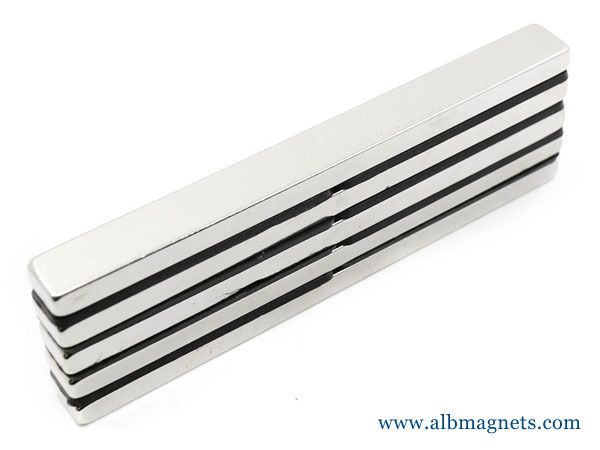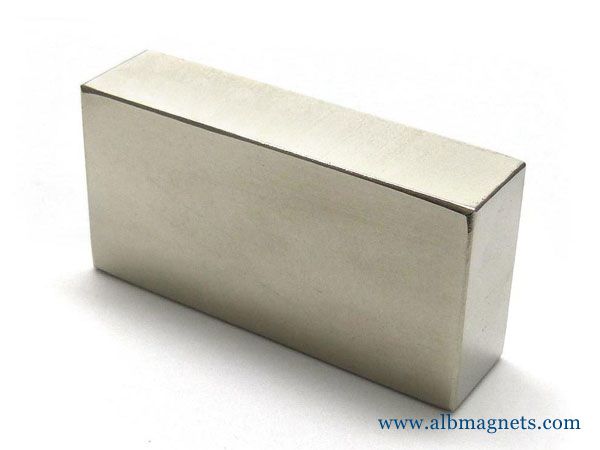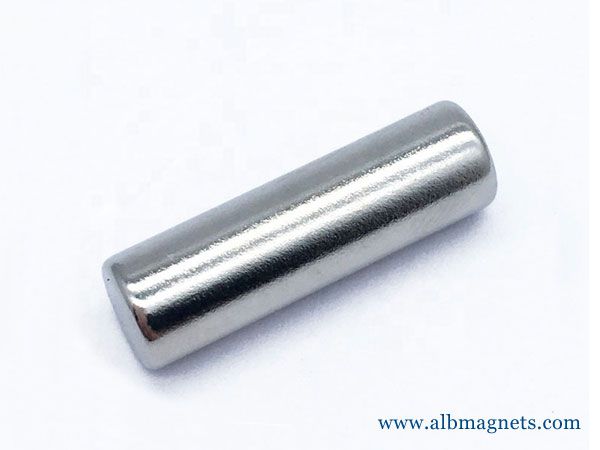401 Ryland St. Ste 200-A,
Reno, NV 89502
United States
E-mail: sales@albmaterials.com
- B-W1H1.5L3-N50BNi Neodymium Magnet, 3x1x1.5mm Block Magnet
- B-W6H3L6-N48 Neodymium Magnet, 6x6x3mm Block Magnet
- BY08Y0 Neodymium Magnets, 2 inch x 1/2 inch x 2 inch thick
- C-D5H8-N42UH Neodymium Magnet, 5x8mm Cylinder Magnet
- DH2H2 Neodymium Magnets, 2/10 inch dia. x 2/10 inch thick
- BX842 Neodymium Magnets, 1 1/2 inch x 1/4 inch x 1/8 inch thick
- DX4C Neodymium Magnets, 1 1/4 inch dia. x 3/4 inch thick
- WPH-SM Magnetic Hooks
- D19 Neodymium Magnets, 1/16 inch dia. x 9/16 inch thick
- BZ0Z02-N52 Neodymium Magnets, 3 inch x 3 inch x 1/8 inch thick
- D12x8mm Neodymium Magnet, 12 x 8mm Disc Magnet
- D-D10H3-N38 Neodymium Magnet, 10x3mm Disc Magnet
- D6x1.5mm-N35 Neodymium Magnets
- D-D10H2-N35 Neodymium Magnet, 10x2mm Disc Magnet
- B773 Neodymium Magnets, 7/16 inch x 7/16 inch x 3/16 inch thick
- B-W5H3L6-N45 Neodymium Magnet, 6x5x3mm Block Magnet
Bar Magnet Definition Physics
bar magnet definition physics
Bar magnet: a magnet in the form of a bar with magnetic poles at each end.
magnet - (physics) a device that attracts iron and produces a magnetic field.
Magnetic Fields, Field Lines, and Force
Magnets and Magnetization
People have been aware of magnets and magnetism for thousands of years.
The earliest records date back to ancient times, particularly in the region of Asia Minor called Magnesia—the name of this region is the source of words like a magnet.
Magnetic rocks found in Magnesia, which is now part of western Turkey, stimulated interest during ancient times.
When humans first discovered magnetic rocks, they likely found that certain parts of these rocks attracted bits of iron or other magnetic rocks more strongly than other parts.
These areas are called the poles of a magnet.
A magnetic pole is the part of a magnet that exerts the strongest force on other magnets or magnetic material, such as iron.
If a bar magnet is suspended so that it rotates freely, one pole of the magnet will always turn toward the north, with the opposite pole facing south.
This discovery led to the compass, which is simply a small, elongated magnet mounted so that it can rotate freely.
The pole of the magnet that orients northward is called the north pole, and the opposite pole of the magnet is called the south pole.
The discovery that one particular pole of a magnet orients northward, whereas the other pole orients southward allowed people to identify the north and south poles of any magnet.
It was then noticed that the north poles of two different magnets repel each other, and likewise for the south poles.
Conversely, the north pole of one magnet attracts the south pole of other magnets.
This situation is analogous to that of electric charge, where like charges repel and unlike charges attract.
In magnets, we simply replace the charge with a pole: Like poles repel and unlike poles attract.
Consider again the fact that the pole of a magnet that orients northward is called the north pole of the magnet.
If unlike poles attract, then the magnetic pole of Earth that is close to the geographic North Pole must be a magnetic south pole! Likewise, the magnetic pole of Earth that is close to the geographic South Pole must be a magnetic north pole.
If we were to somehow suspend a giant bar magnet in space near Earth, then the north pole of the space magnet would be attracted to the south pole of Earth’s internal magnet.
This is in essence what happens with a compass needle: Its magnetic north pole is attracted to the magnet south pole of Earth’s internal magnet.
The magnetic south pole of Earth’s magnet is at the geographic North Pole, so the north pole of magnets is attracted to the North Pole, which is how the north pole of magnets got their name.
Likewise, the south pole of magnets is attracted to the geographic South Pole of Earth.
What happens if you cut a bar magnet in half? Do you obtain one magnet with two south poles and one magnet with two north poles? The answer is no: Each half of the bar magnet has a north pole and a south pole.
You can even continue cutting each piece of the bar magnet in half, and you will always obtain a new, smaller magnet with two opposite poles.
In fact, no experiment has ever found an object with a single magnetic pole, from the smallest subatomic particle such as electrons to the largest objects in the universe such as stars.
Because magnets always have two poles, they are referred to as magnetic dipoles—di means two.
the force between bar magnet: Force between small permanent bar magnets.
The magnetic field of a bar magnet has a simple configuration known as a dipole field.
Close to the Earth's surface, this field is a reasonable approximation of the actual field.
Bar Magnet
The lines of the magnetic field from a bar magnet form closed lines.
By convention, the field direction is taken to be outward from the North pole and into the South pole of the magnet.
Permanent magnets can be made from ferromagnetic materials.
As can be visualized with the magnetic field lines, the magnetic field is strongest inside the magnetic material.
The strongest external magnetic fields are near the poles.
A magnetic north pole will attract the south pole of another magnet, and repel a north pole.
The magnetic field lines of a bar magnet can be traced out with the use of a compass.
The needle of a compass is itself a permanent magnet and the north indicator of the compass is a magnetic north pole.
The north pole of a magnet will tend to line up with the magnetic field, so a suspended compass needle will rotate until it lines up with the magnetic field.
Unlike magnetic poles attract, so the north indicator of the compass will point toward the south pole of a magnet.
In response to the Earth's magnetic field, the compass will point toward the geographic North Pole of the Earth because it is in fact a magnetic south pole.
The magnetic field lines of the Earth enter the Earth near the geographic North Pole.
What are bar magnets?
Bar magnets are rectangular and narrow objects that are made up of steel/iron/ferromagnetic materials which have the ability to generate a magnetic field.
All bar magnets have two poles: the north pole and the south pole which are painted red and blue for identification purposes respectively.
However, in science laboratories, they are painted red completely and the north pole is indicated by a white dot.
Properties of bar magnets
• Bar magnets are made up of ALNICO which is a mix of aluminum, cobalt, and nickel due to which they are usually dark grey or black in color
• They have a north pole and a south pole at the opposite ends.
• They are permanent magnets, they keep their magnetism even when removed from the magnetic field.
• Like poles repel and unlike attract [ north-north repels, south-south repels, north-south attracts]
• The field lines are most concentrated at the poles; therefore, magnetism is strongest at the poles and weakest at the center.
Properties of the magnetic field around a bar magnet
• The magnetic lines are always closed and continuous on both sides of the bar magnet.
• The lines move from north pole to south pole.
They form loops.
• The magnetic lines do not intersect.
• These magnetic field lines spread out more as they move away from the magnetic poles.
• Inside the bar magnet, the magnetic field is from south pole to north pole In the air they move from north pole to south pole.
Bar Magnet Magnetic Field Lines
Magnetic Field Lines of Attraction Between Opposite Poles
Magnetic Field Lines of Repulsion Between Similar Poles
Uses of bar magnet
• By rubbing the magnet on objects like paper clips, safety pins we can magnetize them.
• Bar magnet can function as a compass: When it is attached to a string and suspended, the bar magnet aligns itself towards the north pole of the earth.
• They are used in electric bells.
• They are used in a wide variety of medical procedures
• They are used in magnetic laboratory magnetic experiments as stirring rods
• They are also used in a wide variety of devices like telephones and radios.
Part of the content in this article is reproduced from other media for the purpose of transmitting more information and does not mean that this website agrees with its views or confirms the authenticity of its content. It shall not bear direct responsibility and joint liability for the infringement of such works.
If there is any infringement, bad information, error correction, and other issues in the content of this page, please contact us at info@albmaterials.com
Link to this article: https://www.albmagnets.com/blog/bar-magnet-definition-physics.html
How to choose and buy a strong neodymium magnet? ALBMagnets is a professional company for strong magnet design and manufacturing,
providing you with reliable N35, N38, N42, N52, N42SH and other grade super neodymium magnets and SmCo rare earth magnets.










